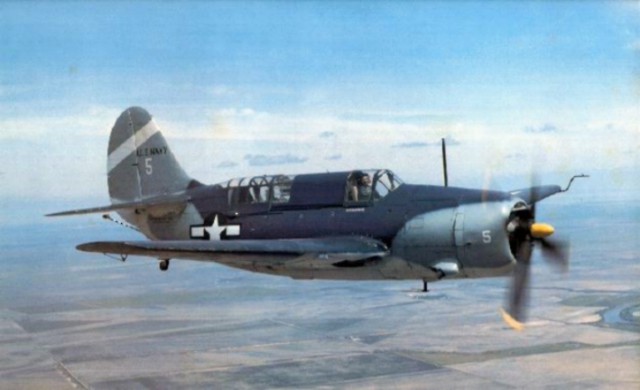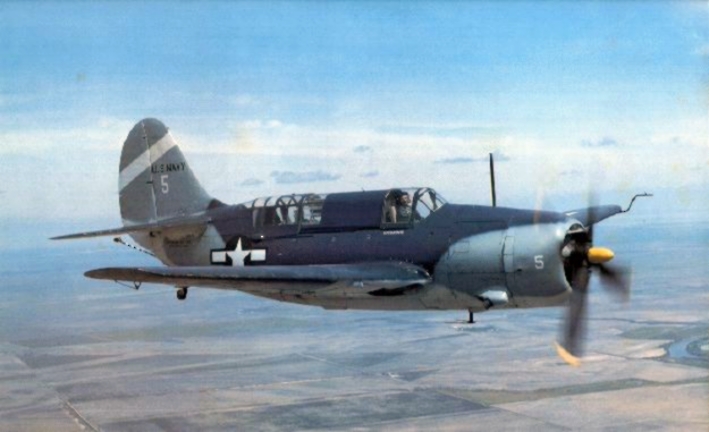
Staring at a restored Curtiss Helldiver, a World War II airman visited his wartime memories very vividly, and described his feelings as ‘unbelievable, absolutely unbelievable’. George Arthur ‘Art’ Plumadore flew in one of these Helldivers during the height of the Second World War as radioman. He participated, though very briefly, in the Pacific theatre of the war bombing the significant Japanese targets leading up to a planned mainland invasion.
Art Plumadore now 91 met his wartime ‘friend’ the Helldiver sitting in the exhibition hall of the Steven F. Udvar-Hazy Center in Chantilly, which is a part of the famous Smithsonian National Air and Space Museum. Plumadore was not only excited but also spellbound by the sheer beauty of the aircraft he flew during the World War, which was meticulously restored by the experts.
During the War Plumadore found himself in the backseat of the Helldiver, which was also known as ‘big-tail beast’ or simply the ‘Beast’. Serving as second-class radioman Plumadore saw very limited action, something he regrets till now. Plumadore signed up for the war in 1943 and received his initial training from Jacksonville and from Naval Air Station Deland, Florida. He was then deployed to the center of the action, the Pacific theatre fighting the Japanese. Most of his brief encounters took place over Tinian and Saipan targeting Japanese military installments with his 0.30-caliber machine guns.
Plumadore describes his feelings inside the Helldiver as an out of the world experience. His aircraft would fly over 20,000 feet before locating and locking-in on the target, it would then dive at it – hence the name helldiver – before releasing a payload and then flying straight back at 3,000 feet. The pilot and radioman had to endure this maneuvering time and time again depending upon the number of targets and number of successful hits.
Near the end of the War, Plumadore and his comrade the pilot Lt. George ‘Knox’ Converse were assigned to the Bombing Squadron 92 aboard the aircraft carrier Lexington. Talking about the last days of the War, Plumadore explains that a massive mainland invasion of Japan was planned including a large number of bombing raids across Japan. The fear was that hundreds of thousands of lives if not millions would be lost during the campaign. But there was no other option since the peculiar indoctrination of the Japanese Army coupled with innovative war tactics made it hard for the US authorities to tolerate any more loss of life on their side. President Truman’s decision of dropping newly developed atomic bombs on Hiroshima and Nagasaki brought a relief in the US Army ranks with an immediate end of the war, the Navy Times reports.
Plumadore stayed in Tokyo as part of the occupation forces and left a year later onboard the Lexington and that was the last time he saw his ‘Helldiver’. Seven decades after the end of the Second World War, Art still remembers the experience of the Helldiving and horrors of the war very vividly.
